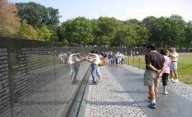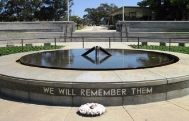题目内容
请根据下面的漫画,结合你自己的切身体会,以"How to face the college entrance examinations"为题,用英语写一篇短评。

要求:1) 着重描述漫画所表达的现象以及你的看法,可适当发挥想象,不要做简单描述;
2) 词数150左右;
3) 参考词汇:补脑汁 tonics
One possible version:
In the cartoon, a senior 3 student is reading in bed and taking some tonics, with many books beside his bed.
Seeing it, I can't help wondering whether Senior 3 students should take a lot of tonics to keep fit. I don't think it unnecessary to. Taking tonics will cause us to put on weight, which is bad for our health. What's more, the price of tonics is rather high.
Then how can we face the college entrance examinations? In my point, we can make progress if we follow the advice. First of all, we should work hard, do more practice and use our mind whenever we meet with problems. Secondly, try to build up our confidence, never give up or lose heart whatever happens. We also should keep a good state of mind. Thirdly, we must create our own way of learning and seek help from both teachers and classmates. Finally, we should have enough nutrients and do more physical exercise so as to keep fit. Don't stay up!.
Make efforts, and we will succeed. (176词)
【解析】
试题分析:这是看图作文,认真读图,可知图画反映了学生高考心态的问题,要求着重描述漫画所表达的现象以及你的看法,首先要认真看图,描述漫画内容,语言要简洁,要抓住重点,阐述自己的观点要有理有据,条理清楚,注意紧扣文章主题,不能偏离主题。写作时注意准确运用时态,上下文意思连贯,符合逻辑关系,不能出现文章脱节问题。尽量使用自己熟悉的单词句式,同时也要注意使用高级词汇和高级句型使文章显得更有档次。
【亮点说明】.范文出彩的地方很多:熟练运用了高中阶段的重点短语和句型:What's more, 更有甚者,In my point, build up our confidence In the cartoon, a senior 3 student is reading in bed and taking some tonics, with many books beside his bed. 这句话使用了with复合结构, Seeing it, I can't help wondering whether Senior 3 students should take a lot of tonics to keep fit. 这句话用了现在分词做状语和宾语从句,I don't think it unnecessary to. 这句话用了it做形式宾语和省略句,Taking tonics will cause us to put on weight, which is bad for our health. 这句话用了动名词做主语和非限制性定语从句, we should work hard, do more practice and use our mind whenever we meet with problems. 这句话用了让步状语从句, we should have enough nutrients and do more physical exercise so as to keep fit.这句话用了目的状语,Make efforts, and we will succeed.这句话用了祈使句+and+简单句的句型,还有范文还使用了First of all, Secondly, Thirdly, Finally,这样的关联词使文章更加连贯。
考点:考查图画类书面表达

 B.
B. 
 D.
D. 